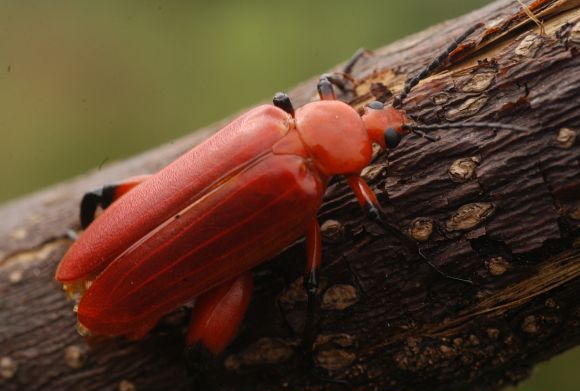|
Horia (beetle)
''Horia'' is a genus of beetles in the family Meloidae. They are placed in a tribe Horiini which includes two other genera '' Synhoria'' and '' Cissites''. Some species in the genus live in the brood colonies of ''Xylocopa Carpenter bees are species in the genus ''Xylocopa'' of the subfamily Xylocopinae. The genus includes some 500 bees in 31 subgenera. The common name "carpenter bee" derives from their nesting behavior; nearly all species burrow into hard plant ma ...'' bees. ''Horia maculata'' was introduced to Hawaii to control ''Xylocopa'' but the beetles did not establish a stable population. References External links Images Meloidae {{Meloidae-stub ... [...More Info...] [...Related Items...] OR: [Wikipedia] [Google] [Baidu] |
Beetle
Beetles are insects that form the order Coleoptera (), in the superorder Endopterygota. Their front pair of wings are hardened into wing-cases, elytra, distinguishing them from most other insects. The Coleoptera, with about 400,000 described species, is the largest of all orders, constituting almost 40% of described insects and 25% of all known animal life-forms; new species are discovered frequently, with estimates suggesting that there are between 0.9 and 2.1 million total species. Found in almost every habitat except the sea and the polar regions, they interact with their ecosystems in several ways: beetles often feed on plants and fungi, break down animal and plant debris, and eat other invertebrates. Some species are serious agricultural pests, such as the Colorado potato beetle, while others such as Coccinellidae (ladybirds or ladybugs) eat aphids, scale insects, thrips, and other plant-sucking insects that damage crops. Beetles typically have a particularly har ... [...More Info...] [...Related Items...] OR: [Wikipedia] [Google] [Baidu] |
Meloidae
Blister beetles are beetles of the family Meloidae, so called for their defensive secretion of a blistering agent, cantharidin. About 7,500 species are known worldwide. Many are conspicuous and some are aposematically colored, announcing their toxicity to would-be predators. Description Blister beetles are hypermetamorphic, going through several larval stages, the first of which is typically a mobile triungulin. The larvae are insectivorous, mainly attacking bees, though a few feed on grasshopper eggs. While sometimes considered parasitoids, in general, the meloid larva apparently consumes the immature host along with its provisions, and can often survive on the provisions alone; thus it is not an obligatory parasitoid, but rather a facultative parasitoid, or simply a kleptoparasite. The adults sometimes feed on flowers and leaves of plants of such diverse families as the Amaranthaceae, Asteraceae, Fabaceae, and Solanaceae. Cantharidin, a poisonous chemical that causes b ... [...More Info...] [...Related Items...] OR: [Wikipedia] [Google] [Baidu] |
Cissites
''Cissites'' is a genus of blister beetles in the family Meloidae. There are at least four described species in ''Cissites''. Species These four species belong to the genus ''Cissites'': * '' Cissites auriculata'' (Champion, 1892) (big-eared blister beetle) * '' Cissites cephalotes'' (Olivier, 1795) * ''Cissites maculata ''Cissites maculata'' is a species of blister beetle that lives on the Galápagos Islands. They are a brood parasite of ''Xylocopa darwini ''Xylocopa darwini'', the Galápagos carpenter bee, is the only native species of bee in the Galápago ...'' (Swederus, 1787) * '' Cissites sasakii'' Kono, 1936 References Further reading * * * External links * Meloidae Articles created by Qbugbot {{meloidae-stub ... [...More Info...] [...Related Items...] OR: [Wikipedia] [Google] [Baidu] |
Xylocopa
Carpenter bees are species in the genus ''Xylocopa'' of the subfamily Xylocopinae. The genus includes some 500 bees in 31 subgenera. The common name "carpenter bee" derives from their nesting behavior; nearly all species burrow into hard plant material such as dead wood or bamboo. The main exceptions are species in the subgenus '' Proxylocopa''; they dig nesting tunnels in suitable soil. Etymology The French entomologist Pierre André Latreille described the genus in 1802. He derived the name from the Ancient Greek ''xylokopos''/ξυλοκὀπος "wood-cutter". Characteristics Many species in this enormous genus are difficult to tell apart; most species are all black, or primarily black with some yellow or white pubescence. Some differ only in subtle morphological features, such as details of the male genitalia. Males of some species differ confusingly from the females, being covered in greenish-yellow fur. The confusion of species arises particularly in the common nam ... [...More Info...] [...Related Items...] OR: [Wikipedia] [Google] [Baidu] |



